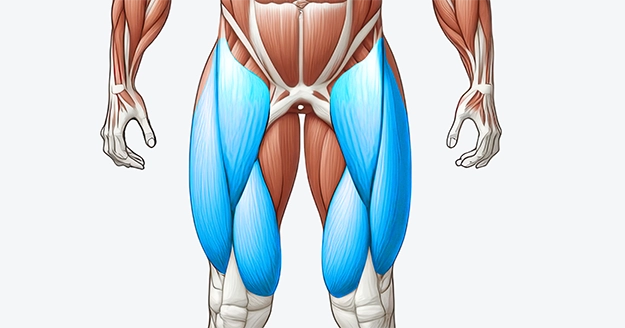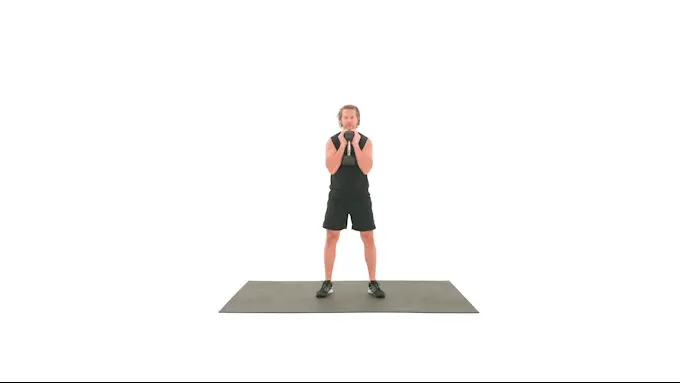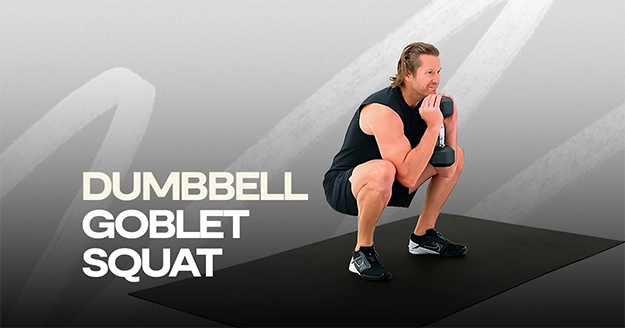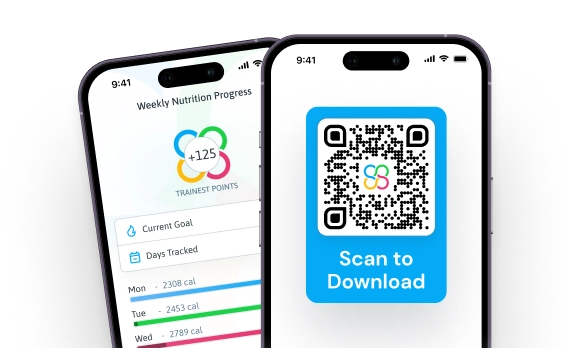Exercise Profile
Dumbbell Goblet Squat Overview
The Dumbbell Goblet Squat is a highly effective lower-body exercise that focuses on the quads and glutes while activating the core for stability. Due to its ability to increase strength and mobility, it is suitable for beginner and seasoned athletes.
For beginners, the goblet squat dumbbell is a great way to develop proper squat form while strengthening the lower body. More advanced athletes can increase their weight to build strength or perform variations like pulse squats for added intensity.
The Goblet Squat with Dumbbell fits easily into leg-focused workouts, as part of a lower-body strength circuit, or in a full-body workout to boost endurance and overall fitness.

Dumbbell Goblet Squat Instructions
Step 1: Hold a dumbbell vertically against your chest. Grasp the top head of the weight with both hands. Your elbows should remain tucked and close to your body throughout. Take a wider-than-shoulder-width stance with your feet pointed out about 45 degrees.
Step 2: Keep your spine neutral with your back straight and chin tucked. Then, brace your core by contracting your core muscles, breathing in through your belly, and holding your breath.
Step 3: Bend at the knees while keeping your torso upright. Your knees should track over your feet, pointing the same way as your toes. Squat down until you reach depth.
Step 4: With your core still braced, squat up by extending at the knees until you reach an upright position. Contract your glutes as you ascend. Exhale just before you reach full knee and hip extension.

Common Dumbbell Goblet Squat Variations
Goblet Squats are an effective exercise for strengthening your legs and enhancing balance. Holding a dumbbell at chest level activates your quads, glutes, and core. This adaptable movement is suitable for both beginners and advanced athletes. Here are four popular variations you can try:
Dumbbell Goblet Squat Tips
- To maintain stability and increase force during the workout, tighten your core muscles. This will help you stay balanced and support proper form significantly as you increase your weight.
- Focus on making each part of the squat explosive, especially as you push back up. This builds strength, improves power, and helps activate more muscle fibers.
- Keep a neutral spine throughout the exercise. Maintaining an elevated chest and pulled-back shoulders will help you avoid rounding your back, lower your chance of injury, and improve your posture as you perform the exercise.
- Keep your heels grounded during the squat to maintain balance and effectively activate your glutes and quads, pressing through them as you lift.
Dumbbell Goblet Squat Common Mistakes
- Bad posture: Not keeping your chest up and shoulders back strains your lower back and can cause injury.
- Not squatting low enough: Failing to squat deep enough limits muscle activation and can lead to poor form. Aim for hips below your knees at the bottom position.
- Using too much weight: Lifting too heavy or holding the weight too far from your chest can throw off your balance and increase injury risk. Keep the weight near your chest and start light.
Frequently Asked Questions
What distinguishes a goblet squat from a regular squat?
The primary difference is the use of external weight. You hold a weight in front of your chest in a goblet squat, just like you would with a huge goblet.
Why is goblet squat easier?
The position of the weight is what sets the goblet squat apart. You must squat while gripping a dumbbell or kettlebell at chest height for this exercise. This location can help you squat with more ease and movement.
Are goblet squats good for the knees?
Goblet squats strengthen the muscles that surround the knee joint, particularly the quadriceps, helping to protect the knee and reduce the risk of additional injury.
Are dumbbell goblet squats effective?
When performed correctly, a goblet squat can build every muscle in your body, improve posture and mobility, and raise your metabolism.
Can I perform goblet dumbbell squats if I have limited shoulder mobility?
Yes, dumbbell goblet squats are a good option if you have limited shoulder mobility. Squatting with a dumbbell in front of you at chest level lessens the strain on your shoulders compared to barbell squats. This position can also enhance your squat form and offer a safer option as you work on improving shoulder flexibility.
Post your post-workout selfies in IG and tag @trainestapp, #trainest, or DM them to us to get a shoutout on Trainest Stories!



